Zoom
Trash

Inclusion in Action - Buy Textbook. Ⓒ 2017ISBN 9780170376174Edition 5 600 Pages.

How to Differentiate in the Science Classroom (Or Any Classroom!) As teachers, we often ask ourselves, “How do I meet the needs of all of my students?”
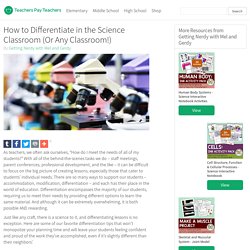
With all of the behind-the-scenes tasks we do – staff meetings, parent conferences, professional development, and the like – it can be difficult to focus on the big picture of creating lessons, especially those that cater to students’ individual needs. There are so many ways to support our students – accommodation, modification, differentiation – and each has their place in the world of education. Differentiation encompasses the majority of our students, requiring us to meet their needs by providing different options to learn the same material.
And although it can be extremely overwhelming, it is both possible AND rewarding. Just like any craft, there is a science to it, and differentiating lessons is no exception. Accessible Academic Vocabulary. Science Social Studies Slides for October CD Meeting.
Winter 2018. Inside the Fishbowl: A Tool for Student Discussions. Q&A with Mandy Manning - Educational Leadership. Favorite Diversity Children Books – PragmaticMom. STEM Career Integration in Math: A Social Justice Issue. NEW VIDEO: Makerspaces are places for children to build physical things—sculptures, ramps, or robots—as well as fundamental skills like cooperation, self-regulation, and persistence.… Nine Competencies for Teaching Empathy - Educational Leadership. Gaining Understanding on What Your Students Know. Overview Exit Tickets: Checking for Understanding Exit tickets are a formative assessment tool that give teachers a way to assess how well students understand the material they are learning in class.
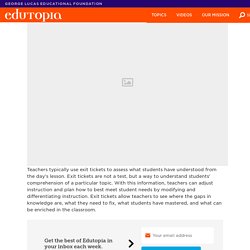
Why Multilingual People Have Healthier, More Engaged Brains. Prior to the 1960s, scientists thought children who spoke more than one language had a handicap for learning because they had to spend too much time distinguishing between languages.
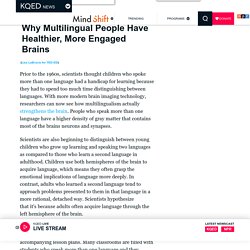
With more modern brain imaging technology, researchers can now see how multilingualism actually strengthens the brain. People who speak more than one language have a higher density of gray matter that contains most of the brains neurons and synapses. Scientists are also beginning to distinguish between young children who grow up learning and speaking two languages as compared to those who learn a second language in adulthood. Children use both hemispheres of the brain to acquire language, which means they often grasp the emotional implications of language more deeply. Paper Tweets Build SEL Skills.
“I suck.
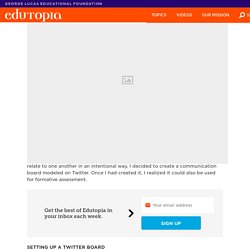
Inquiry as an entry point to equity in the classroom: International Journal of Mathematical Education in Science and Technology: Vol 48, No sup1. James Nottingham talks about Challenge. Learning Pit - James Nottingham. Early Learning & Preschool Education - Child-centered & Playful Learning in Finland – ALO Finland Cultivating Curiosity, Creativity and Future Innovators. Theconversation. The belief that technology can automate education and replace teachers is pervasive.

Framed in calls for greater efficiency, this belief is present in today’s educational innovations, reform endeavours, and technology products. We can do better than adopting this insipid perspective and aspire instead for a better future where innovations imagine creative new ways to organise education. In the 1920s and 1930s, American psychologist Sidney Pressey worked to create a future in which machines would eliminate “the grossly inefficient and clumsy procedures of conventional education,” freeing teachers from routine tasks, to be “real teachers” instead of “clerical workers”. Pressey created the “Automatic Teacher” to realise this vision. This was a teaching machine that presented information, accepted a response, and returned pre-recorded feedback. For example, during World War II, filmstrips were used to train large numbers of civilians and military personnel in the United States. Why new technologies could never replace great teaching.
At a recent British Council debate, Is teaching obsolete?
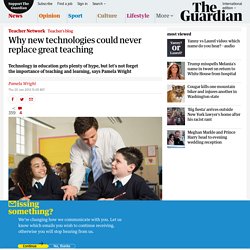
How I Use One-Pagers in English Language Arts (With Examples!) If you follow many teachers on social media, you know that one-pagers are suddenly all the rage.
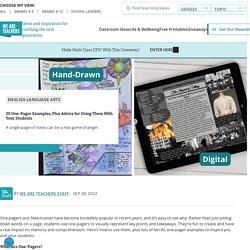
I can see why. Edutopia. Edutopia. Staying for the credits. The 21st century classroom – where the 3 R’s meet the 4 C’s! Our world is changing and changing rapidly.
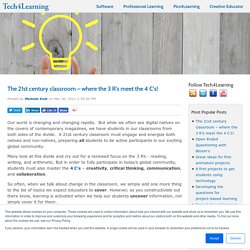
But while we often see digital natives on the covers of contemporary magazines, we have students in our classrooms from both sides of the divide. A 21st century classroom must engage and energize both natives and non-natives, preparing all students to be active participants in our exciting global community. Six Characteristics of a Great STEM Lesson. —Getty By Anne Jolly STEM is more than just a grouping of subject areas. It is a movement to develop the deep mathematical and scientific underpinnings students need to be competitive in the 21st-century workforce.
But this movement goes far beyond preparing students for specific jobs. Failure is the key to your child's success: here's why. Why there’s no such thing as a gifted child. When Maryam Mirzakhani died at the tragically early age of 40 this month, the news stories talked of her as a genius.
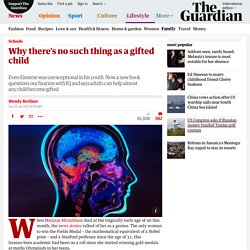
How We’re Smart. Here, we provide an overview of that work on intelligence — along with ways that educators can bring these ideas into their own classrooms. Intelligence is Multiple What if, instead of asking, “How smart am I?” We encouraged kids to ask, “How am I smart?” The Importance of Academic Courage. Destiny, a high school junior, stood at the whiteboard with her classmates huddled close on plastic chairs, the back row sitting on desktops. She paused in the middle of writing a math solution and turned to the class. “I’m not sure this is right,” she admitted.
“We chose a really hard problem, but our group thinks this works. Let me know if it makes sense.” AI: Urgent need to 'reconceive schooling' to ensure workforce not consigned to joblessness. Updated Schools must urgently adapt to confront the enormous challenges presented by artificial intelligence, according to leading educators who are calling for an overhaul to curriculum, assessment and teaching methods. Australia is hosting international experts on education and AI at a symposium that will be attended by teachers from around the country.
Freethink - This tattooed, skateboarding principal from... Derelict school becomes national leader by making making a surprising subject compulsory. Five Ways to Bring Creativity Back to the Middle Grades. TeachMeet Streatham 2017. Adam Grant: The surprising habits of original thinkers. How to Raise a Creative Child. Step One: Back Off. An Interview with Sir Ken Robinson (Ep. 068) In this very special episode of Art Ed Radio, Tim is in Los Angeles to interview the one and only Sir Ken Robinson. Sir Ken is a world-renowned expert on creativity and innovation, and his TED Talk, “Do Schools Kill Creativity?” Cookies are Not Accepted - New York Times. Education Review: Play misunderstood: the divide between primary classroom teachers and senior managers June 2017 SARAH AIONO of Longworth Education suggests that a successful play-based learning environment requires a level of skill by teachers not easily understood by school management.
The use of play as a teaching and learning tool in the primary classroom is growing momentum in New Zealand. Edutopia. 7 Reflection Tips for Assessment, Empowerment, and Self-Awareness. Reflecting takes many forms in the classroom, and it is an integral and indispensable part of education. Reinventing our Kids Education. Angela Lee Duckworth: Grit: The power of passion and perseverance. Music instruction improves cognitive, socio-emotional development in young children. Why are so Many of our Teachers and Schools so Successful?: John Hattie at TEDxNorrkoping.
How Was Your Summer? – Spoon Vision.
Maths Apps. EDMA410. EDFD112. EDFD460. EDFD459. EDAC314. Bullying. EDLA403. EDLA430.